Abstract
A concurrent-chain procedure was used to study pigeons' choices between rewards differing in both amount and delay. The shorter delay terminated with a 2-second access to grain whereas the longer delay terminated with a 6-second access to grain. The ratio of the delays was constant within a given condition while their absolute values were varied. Over conditions, ratios of 6:1, 3:1, and 3:2 were studied. As the absolute values of the delays to reinforcement increased, preference for the longer-delayed but larger reward decreased under both the 6:1 and 3:1 ratios, but increased under the 3:2 ratio. These results are inconsistent with choice models predicting no change in preference when the ratios of delays and amounts are held constant. In addition, the change in preference under the 3:1 ratio is inconsistent with a simple multiplicative interaction of the trade off between reinforcer amount and delay, and suggests that delay is a more potent determinant of choice than is amount. These results have implications for models that view choice between small immediate rewards and large but delayed rewards as underlying the behavior commonly called self control.
Keywords: choice, self control, concurrent-chain, matching, amount, delay, key peck, pigeons
Full text
PDF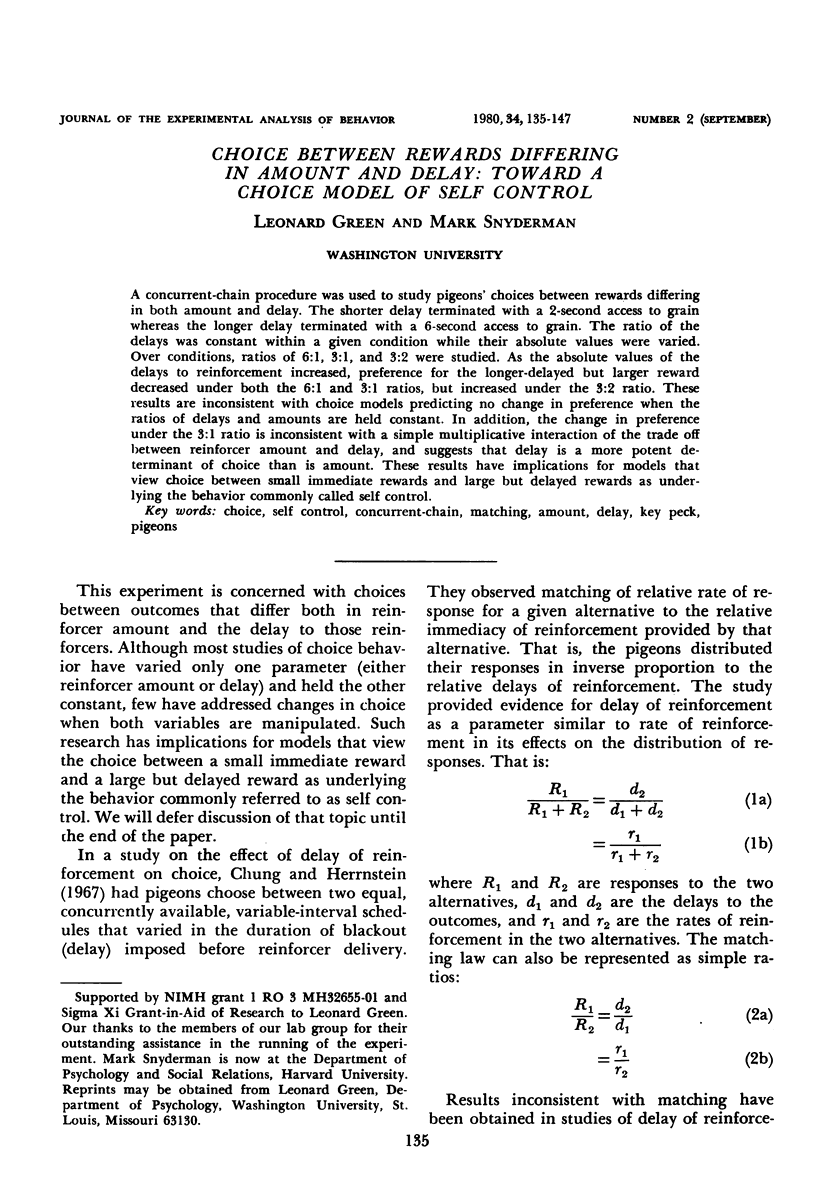
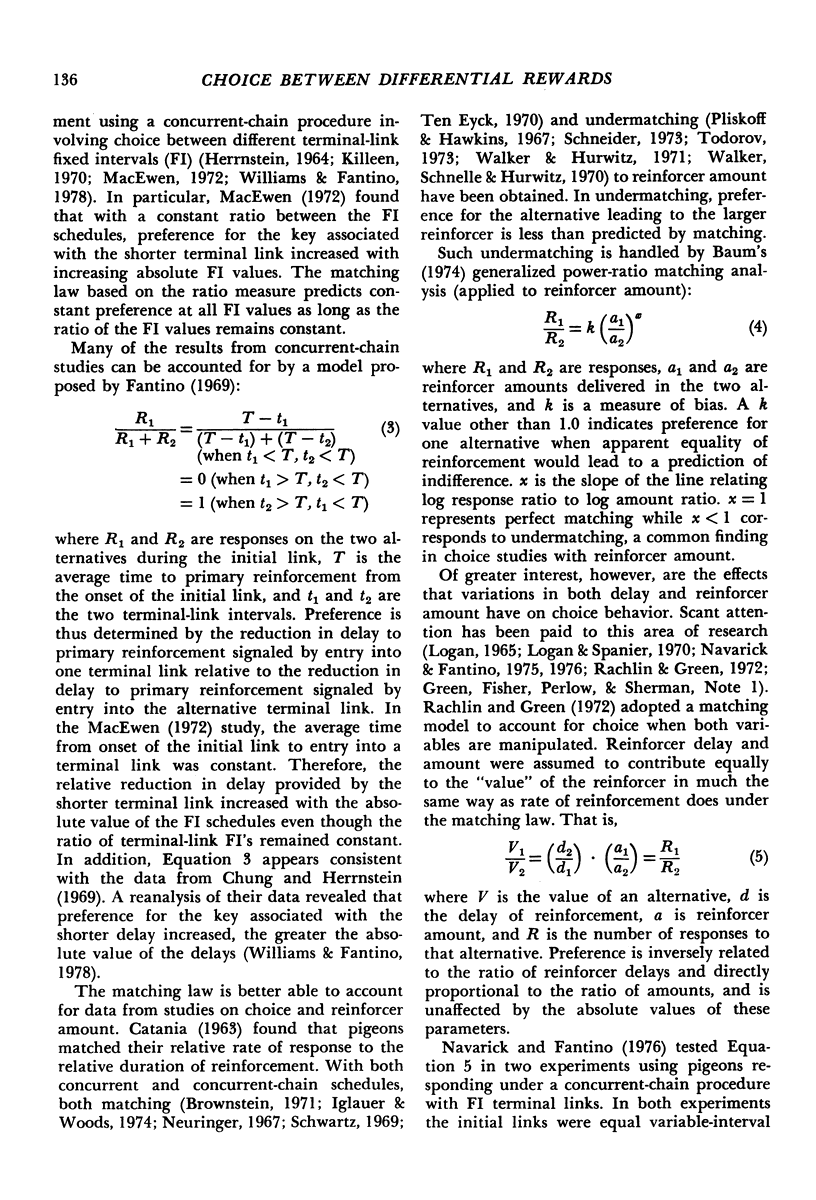

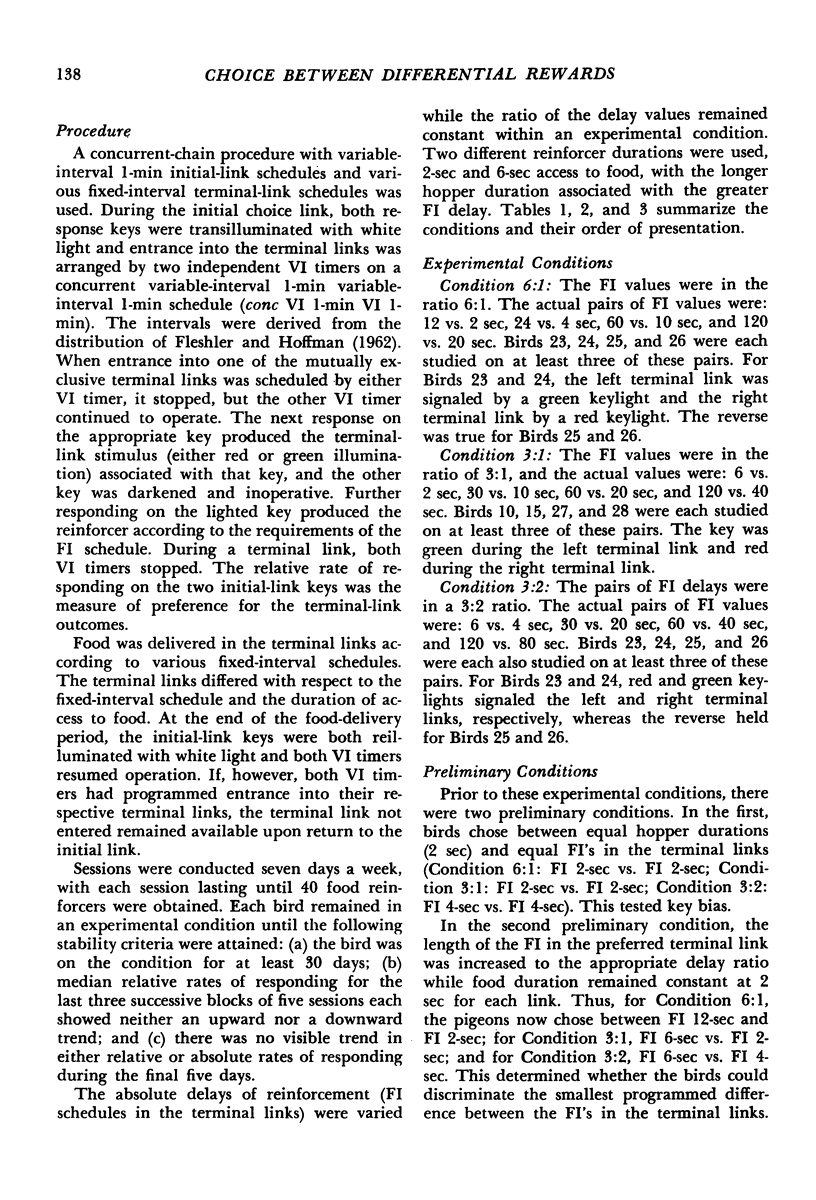
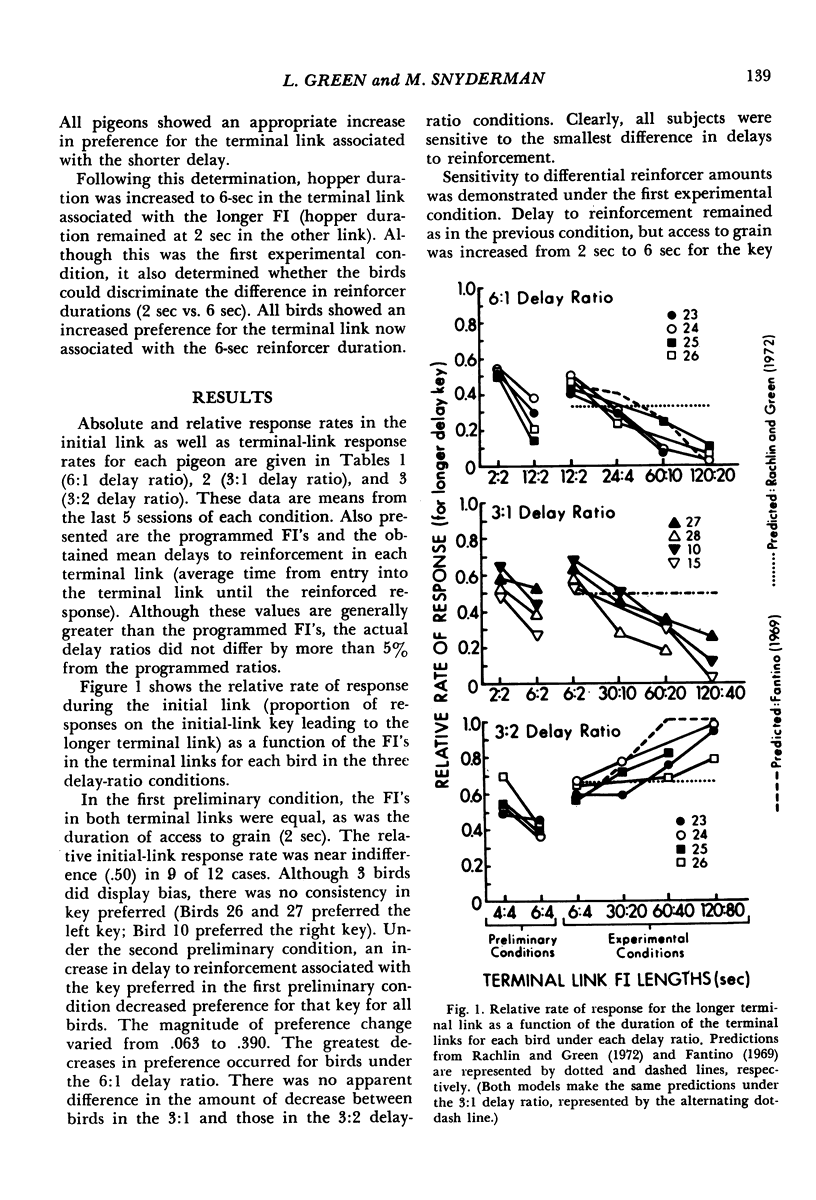
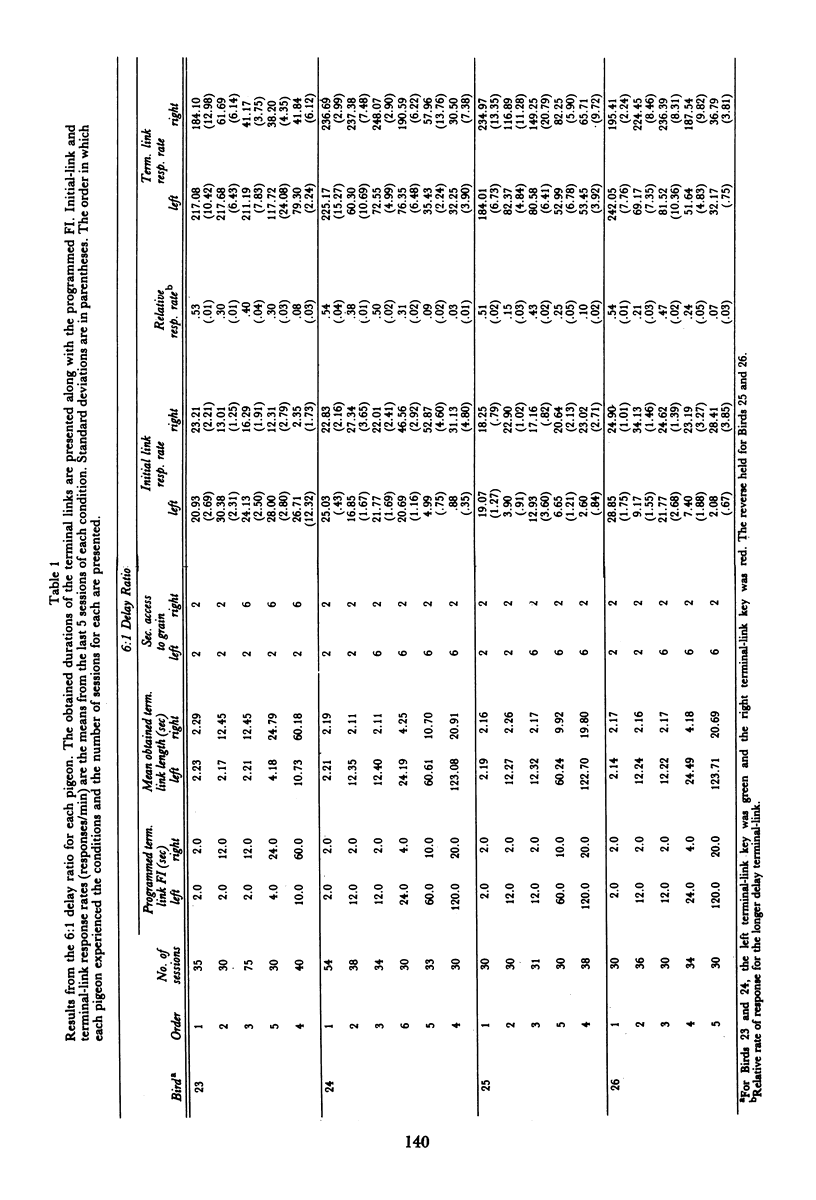
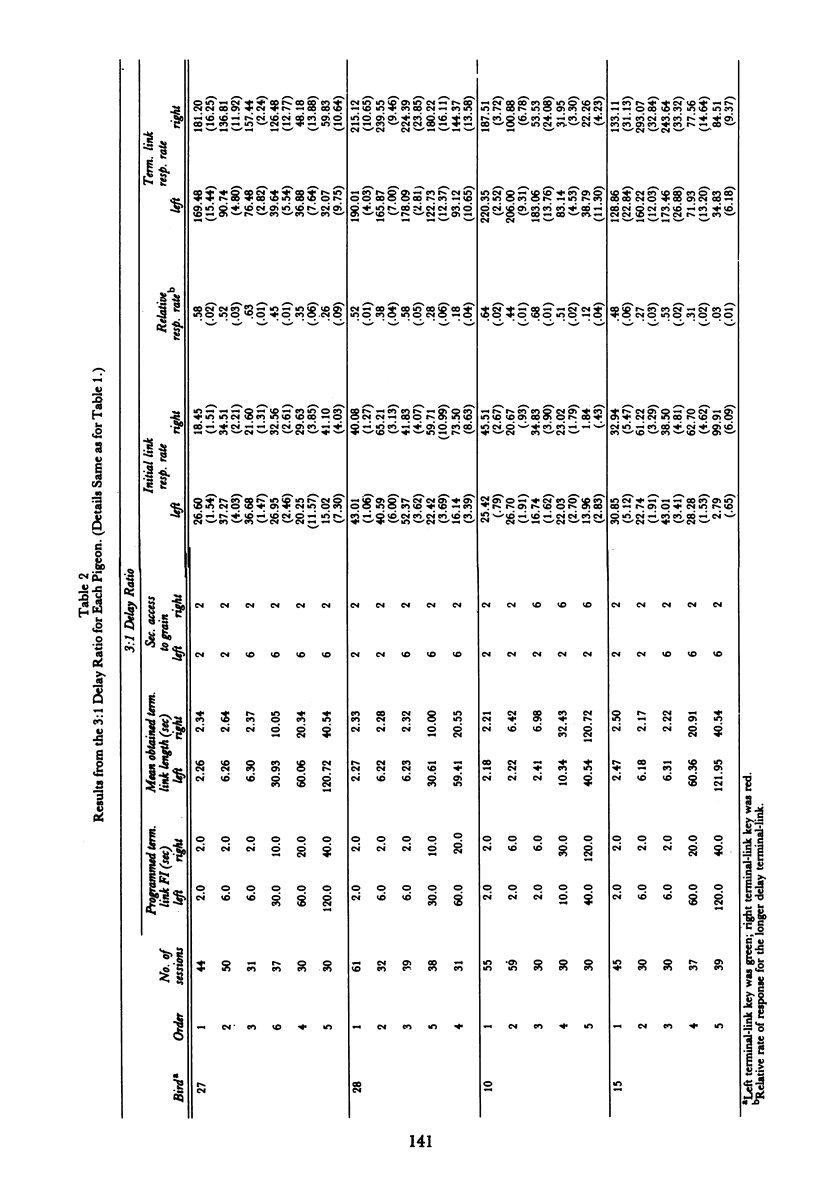
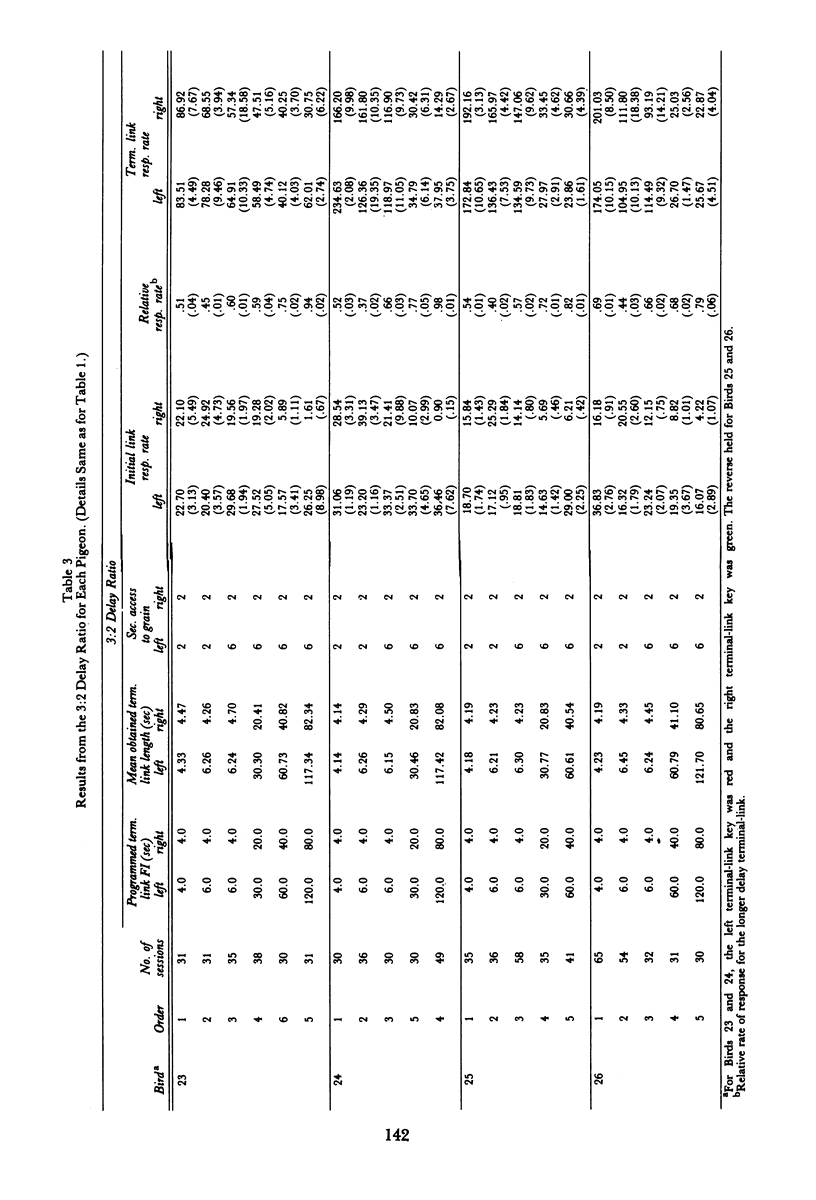
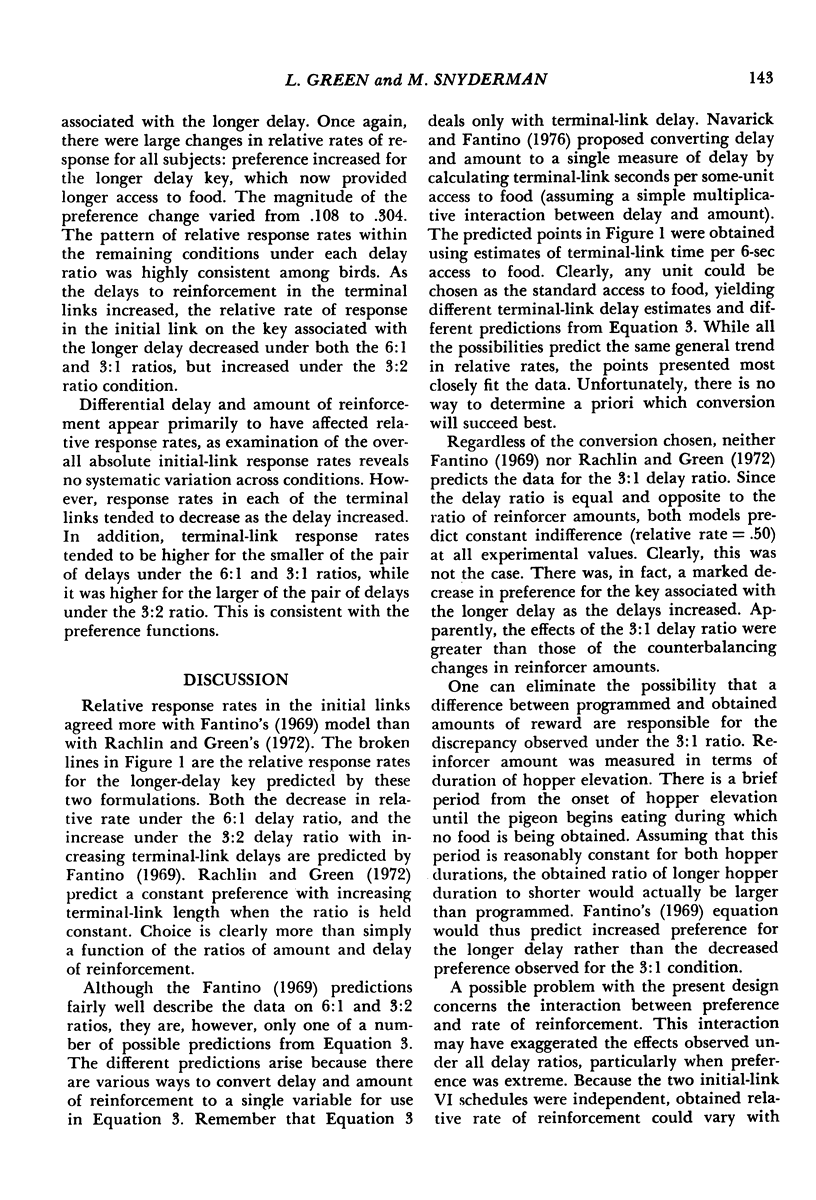
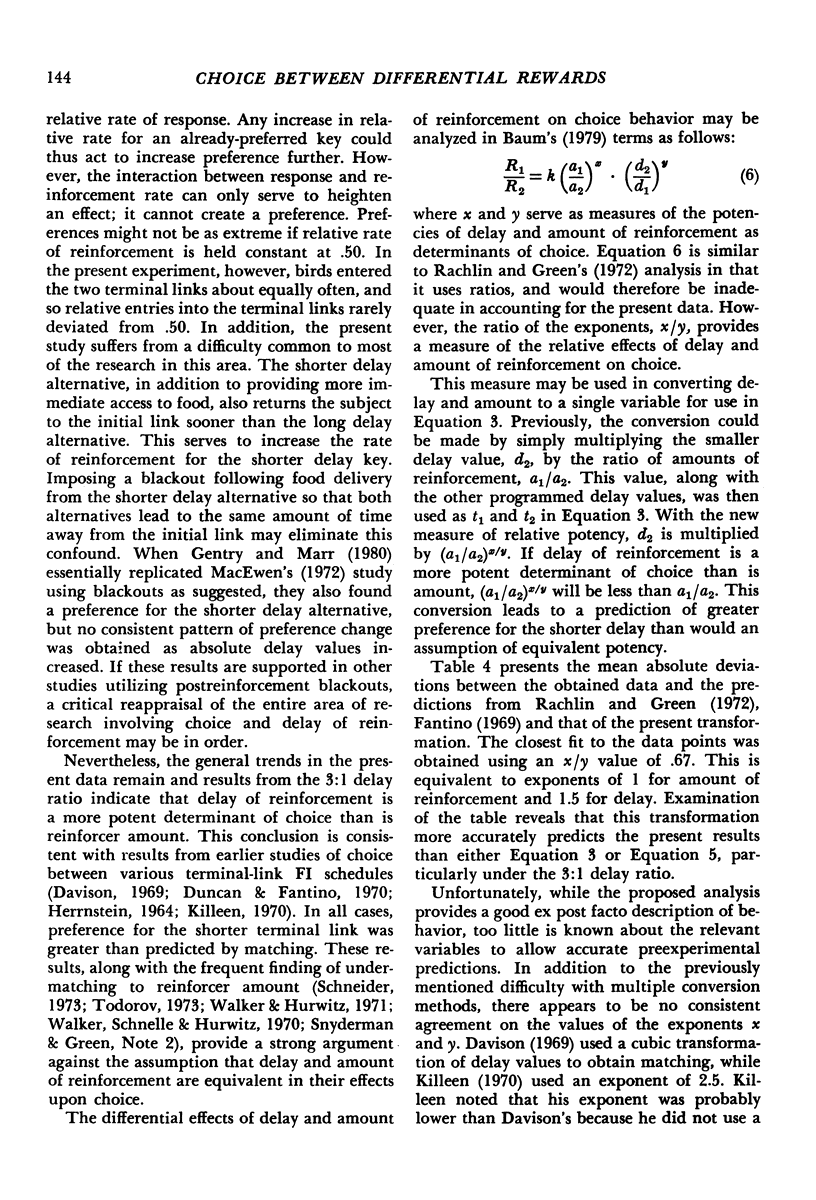
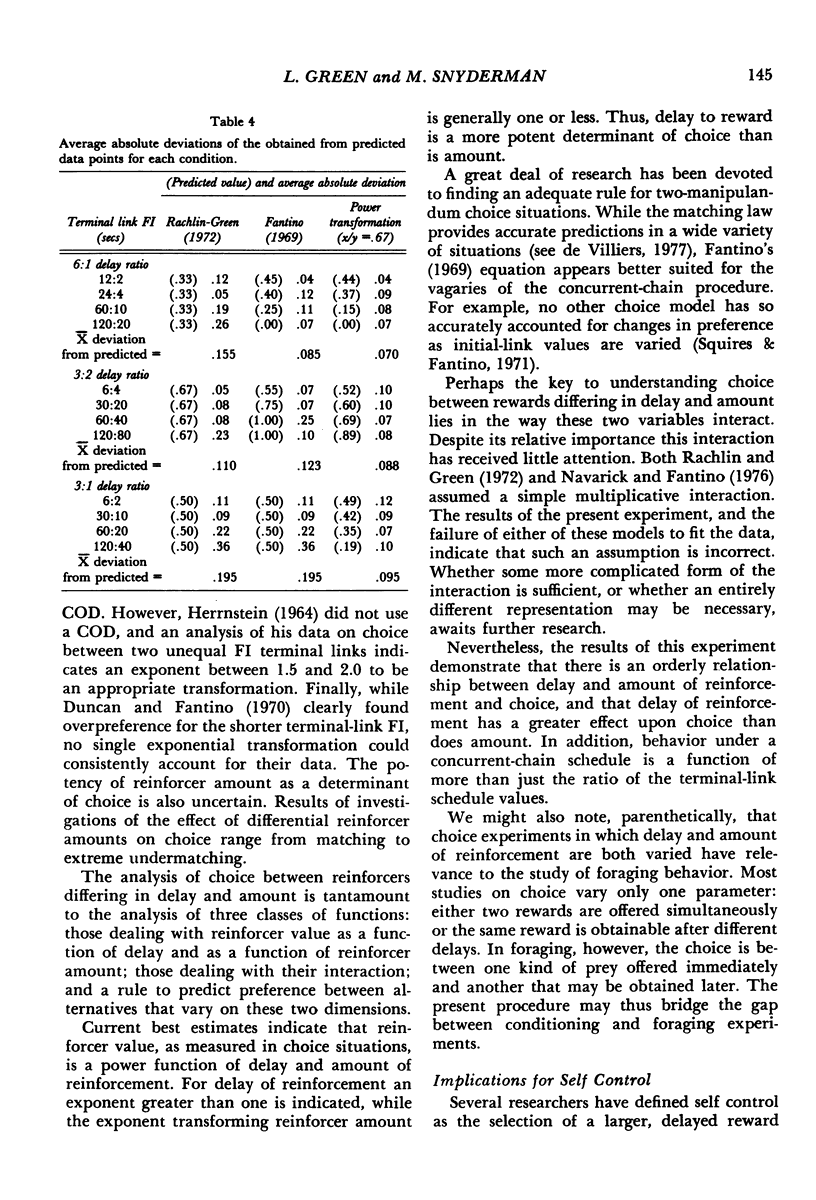
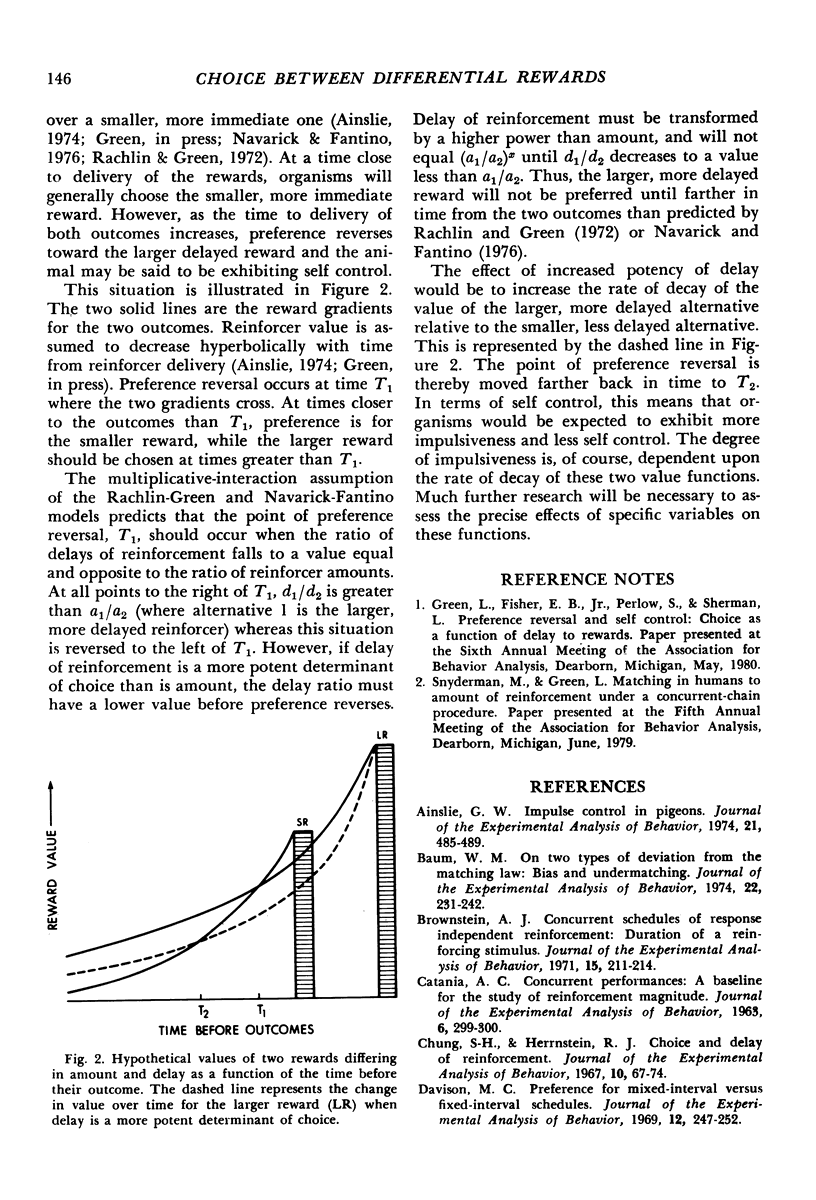
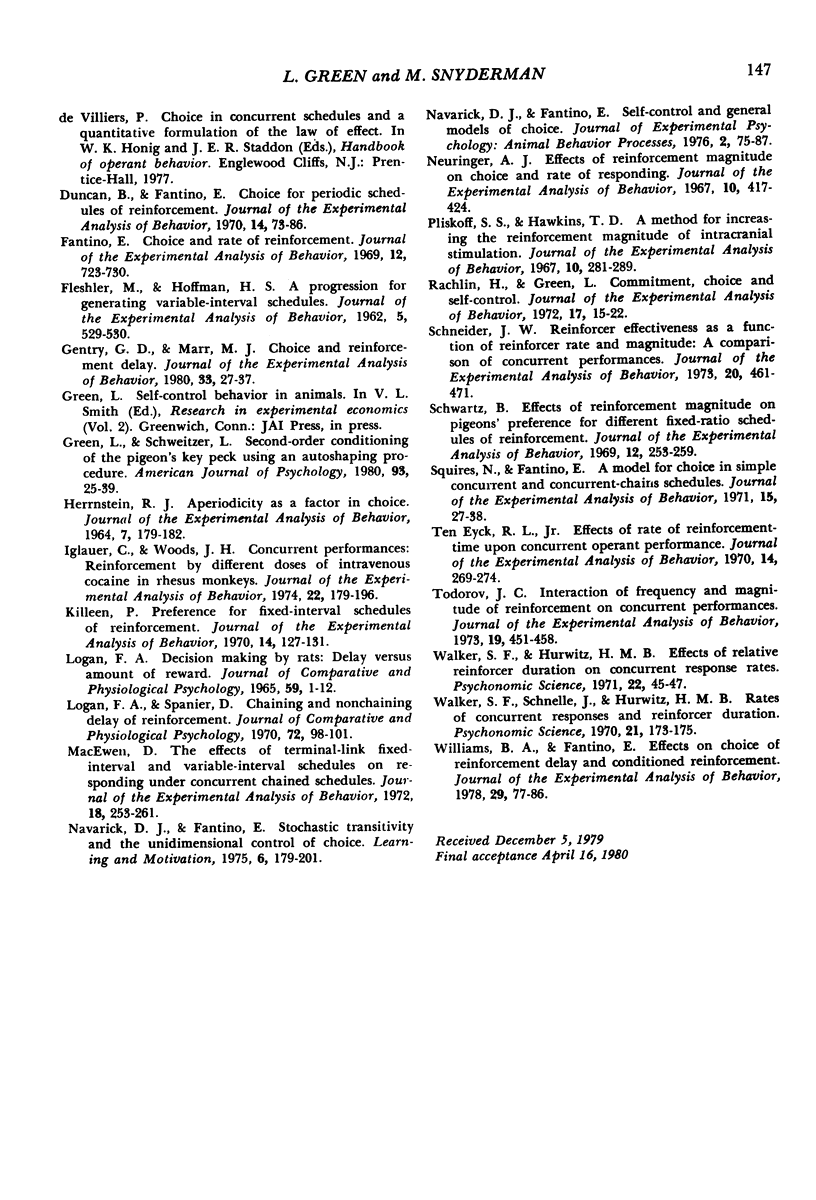
Selected References
These references are in PubMed. This may not be the complete list of references from this article.
- Ainslie G. W. Impulse control in pigeons. J Exp Anal Behav. 1974 May;21(3):485–489. doi: 10.1901/jeab.1974.21-485. [DOI] [PMC free article] [PubMed] [Google Scholar]
- Baum W. M. On two types of deviation from the matching law: bias and undermatching. J Exp Anal Behav. 1974 Jul;22(1):231–242. doi: 10.1901/jeab.1974.22-231. [DOI] [PMC free article] [PubMed] [Google Scholar]
- Brownstein A. J. Concurrent schedules of response-independent reinforcement: duration of a reinforcing stimulus. J Exp Anal Behav. 1971 Mar;15(2):211–214. doi: 10.1901/jeab.1971.15-211. [DOI] [PMC free article] [PubMed] [Google Scholar]
- CATANIA A. C. Concurrent performances: a baseline for the study of reinforcement magnitude. J Exp Anal Behav. 1963 Apr;6:299–300. doi: 10.1901/jeab.1963.6-299. [DOI] [PMC free article] [PubMed] [Google Scholar]
- Chung S. H., Herrnstein R. J. Choice and delay of reinforcement. J Exp Anal Behav. 1967 Jan;10(1):67–74. doi: 10.1901/jeab.1967.10-67. [DOI] [PMC free article] [PubMed] [Google Scholar]
- Davison M. C. Preference for mixed-interval versus fixed-interval schedules. J Exp Anal Behav. 1969 Mar;12(2):247–252. doi: 10.1901/jeab.1969.12-247. [DOI] [PMC free article] [PubMed] [Google Scholar]
- Duncan B., Fantino E. Choice for periodic schedules of reinforcement. J Exp Anal Behav. 1970 Jul;14(1):73–86. doi: 10.1901/jeab.1970.14-73. [DOI] [PMC free article] [PubMed] [Google Scholar]
- FLESHLER M., HOFFMAN H. S. A progression for generating variable-interval schedules. J Exp Anal Behav. 1962 Oct;5:529–530. doi: 10.1901/jeab.1962.5-529. [DOI] [PMC free article] [PubMed] [Google Scholar]
- Fantino E. Choice and rate of reinforcement. J Exp Anal Behav. 1969 Sep;12(5):723–730. doi: 10.1901/jeab.1969.12-723. [DOI] [PMC free article] [PubMed] [Google Scholar]
- Gentry G. D., Marr M. J. Choice and reinforcement delay. J Exp Anal Behav. 1980 Jan;33(1):27–37. doi: 10.1901/jeab.1980.33-27. [DOI] [PMC free article] [PubMed] [Google Scholar]
- Green L., Schweitzer L. Second-order conditioning of the pigeon's key-peck using an autoshaping procedure. Am J Psychol. 1980 Mar;93(1):25–39. [PubMed] [Google Scholar]
- HERRNSTEIN R. J. APERIODICITY AS A FACTOR IN CHOICE. J Exp Anal Behav. 1964 Mar;7:179–182. doi: 10.1901/jeab.1964.7-179. [DOI] [PMC free article] [PubMed] [Google Scholar]
- Iglauer C., Woods J. H. Concurrent performances: reinforcement by different doses of intravenous cocaine in rhesus monkeys. J Exp Anal Behav. 1974 Jul;22(1):179–196. doi: 10.1901/jeab.1974.22-179. [DOI] [PMC free article] [PubMed] [Google Scholar]
- Killeen P. Preference for fixed-interval schedules of reinforcement. J Exp Anal Behav. 1970 Sep;14(2):127–131. doi: 10.1901/jeab.1970.14-127. [DOI] [PMC free article] [PubMed] [Google Scholar]
- LOGAN F. A. DECISION MAKING BY RATS: DELAY VERSUS AMOUNT OF REWARD. J Comp Physiol Psychol. 1965 Feb;59:1–12. doi: 10.1037/h0021633. [DOI] [PubMed] [Google Scholar]
- Macewen D. The effects of terminal-link fixed-interval and variable-interval schedules on responding under concurrent chained schedules. J Exp Anal Behav. 1972 Sep;18(2):253–261. doi: 10.1901/jeab.1972.18-253. [DOI] [PMC free article] [PubMed] [Google Scholar]
- Neuringer A. J. Effects of reinforcement magnitude on choice and rate of responding. J Exp Anal Behav. 1967 Sep;10(5):417–424. doi: 10.1901/jeab.1967.10-417. [DOI] [PMC free article] [PubMed] [Google Scholar]
- Pliskoff S. S., Hawkins T. D. A method for increasing the reinforcement magnitude of intracranial stimulation. J Exp Anal Behav. 1967 May;10(3):281–289. doi: 10.1901/jeab.1967.10-281. [DOI] [PMC free article] [PubMed] [Google Scholar]
- Rachlin H., Green L. Commitment, choice and self-control. J Exp Anal Behav. 1972 Jan;17(1):15–22. doi: 10.1901/jeab.1972.17-15. [DOI] [PMC free article] [PubMed] [Google Scholar]
- Schneider J. W. Reinforcer effectiveness as a function of reinforcer rate and magnitude: a comparison of concurrent performances. J Exp Anal Behav. 1973 Nov;20(3):461–471. doi: 10.1901/jeab.1973.20-461. [DOI] [PMC free article] [PubMed] [Google Scholar]
- Schwartz B. Effects of reinforcement magnitude on pigeons' preference for different fixed-ratio schedules of reinforcement. J Exp Anal Behav. 1969 Mar;12(2):253–259. doi: 10.1901/jeab.1969.12-253. [DOI] [PMC free article] [PubMed] [Google Scholar]
- Squires N., Fantino E. A model for choice in simple concurrent and concurrent-chains schedules. J Exp Anal Behav. 1971 Jan;15(1):27–38. doi: 10.1901/jeab.1971.15-27. [DOI] [PMC free article] [PubMed] [Google Scholar]
- Ten Eyck R. L. Effects of rate of reinforcement-time upon concurrent operant performance. J Exp Anal Behav. 1970 Nov;14(3):269–274. doi: 10.1901/jeab.1970.14-269. [DOI] [PMC free article] [PubMed] [Google Scholar]
- Todorov J. C. Interaction of frequency and magnitude of reinforcement on concurrent performances. J Exp Anal Behav. 1973 May;19(3):451–458. doi: 10.1901/jeab.1973.19-451. [DOI] [PMC free article] [PubMed] [Google Scholar]
- Williams B. A., Fantino E. Effects on choice of reinforcement delay and conditioned reinforcement. J Exp Anal Behav. 1978 Jan;29(1):77–86. doi: 10.1901/jeab.1978.29-77. [DOI] [PMC free article] [PubMed] [Google Scholar]


